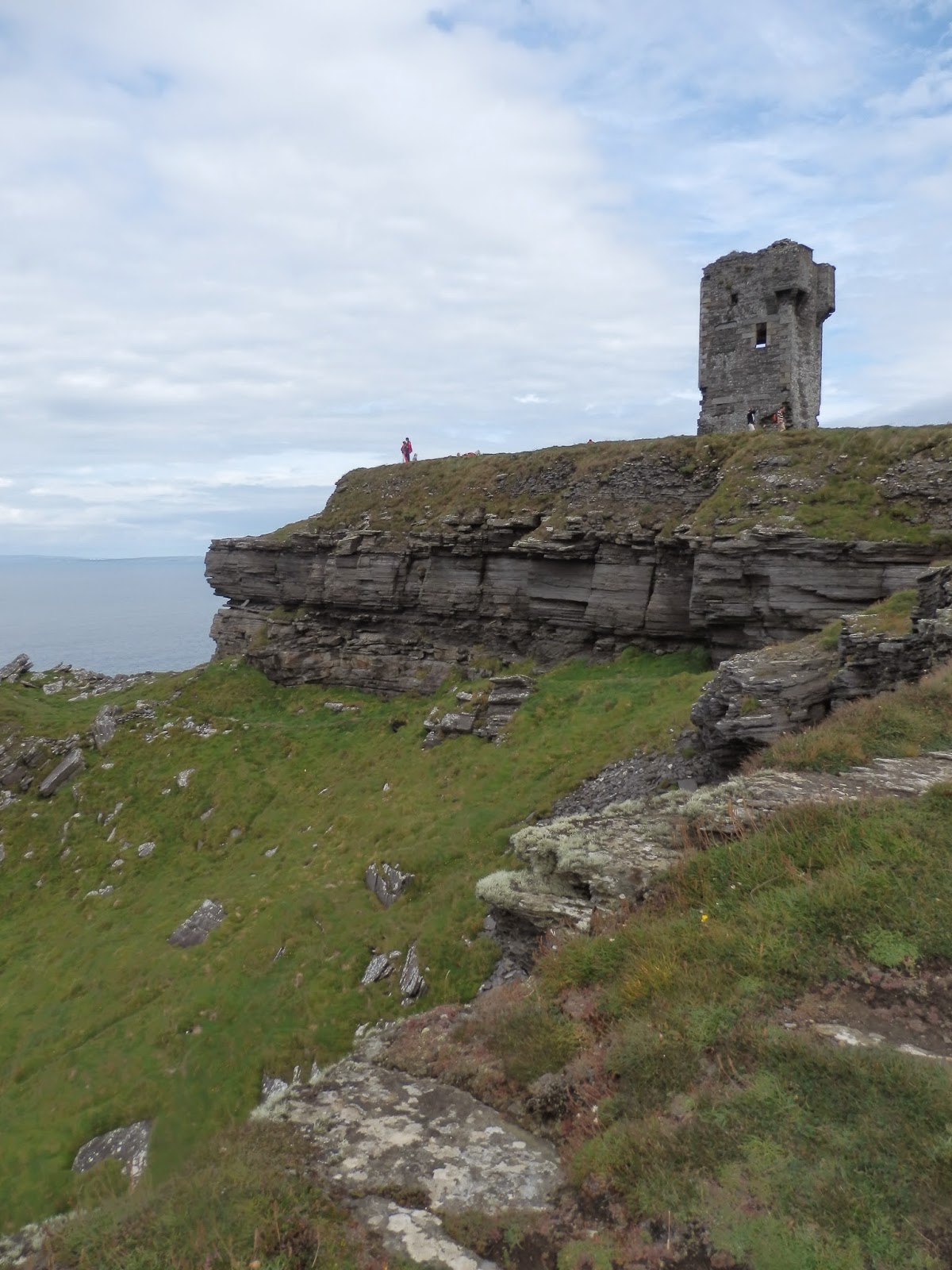Geoff guided us to the local station to
catch a train into Belfast. After sorting out domestic issues and a
quick visit to the impressive City Hall we decided to try and catch a
hop-on-hop off bus. The one recommended was actually quite difficult
to find. We managed to get tickets from a shop, but then were given
different sets of directions from different people so we went round
in circles while dodging the rain.
 |
| Belfast Castle and view over the Loch |
 |
| Fortified Police Station |
The tour was in a couple of parts. The
first took us past Belfast Castle which is quite small, but has a
great spot on the side of the hill overlooking the city. It then
took us through the heart of the area which was affected by “The
Troubles”. Antrim Road, Shankhill Road, Crumlin Road were names
which were well known around the world for a while for the wrong
reasons. Many of the police stations are still heavily fortified
with high walls, razor wire and security cameras. There are murals
throughout the area we drove through supporting both sides of the
conflict, with the loyalist areas still decked out with Union Jacks
everywhere. Since the peace process has begun there have been huge
efforts to integrate Protestants and Catholics who live essentially
side by side in many different ways but in particular by sending
their children to multi-denominational schools, etc. We drove past
the “Peace Wall” which was built to separate the two sides, the
politicians reasoning that if they couldn't see each other, they
wouldn't shoot each other!! A sign that the peace process has worked is that some of the bombed out areas where housing was cheap are now being gentrified and money is moving into the area.
 |
| The provocation still exists |
Our second tour missed out on going to
the docks which were the lifeblood of Belfast for a long time.
Belfast was famous for its shipbuilding (the Titanic was built here)
and the two huge cranes are still there and are currently working to
build and repair drilling rigs. We did however see the fine
buildings at Queens University and the Queens Hospital where world
leading cancer research is being carried out. One of its buildings
was recently opened by Prince Charles who apparently commented
afterwards that it was the ugliest building he ever had to open.
Some wits have nicknamed this building “Camilla”.
 |
| "Camilla" |
Our last stop in Belfast was the Ulster
Folk and Transport Museum. We gave the transport part a miss as well
as the Irish Dancing display and headed into the reconstructed
village. Reminiscent of Sovereign Hill in Ballarat, it is a site
where old buildings depicting different aspects of life amongst
normal people have been rescued and shifted to. Sandie and Jeff were
amazed at how much has been added to it since last they were there.
The oldest buildings were 16th century fisherman's
cottages, built of stone and wattle and daub. The “wattle” had
ropes of straw woven between the wattle stakes before the daub was
applied. There were several working exhibitions, one of weaving
woollen fabric and another cooking soda cakes – very tasty. Jill
got a copy of the soda cake recipe from the printer in the “village”
so that she can try them at home.
 |
| Poteen anyone? |
Meanwhile, the police display had,
amongst the usual uniforms and weapons, a “poteen” still which
would have been highly prized. The policeman's life was not easy,
and even his social life was controlled – he was not allowed to
marry for five years after he joined the police force!
The drizzle curtailed our visit to the
farm area so we had a quiet drink at one of Jeff's old watering
holes, then headed for the airport to go back to Chester.














































